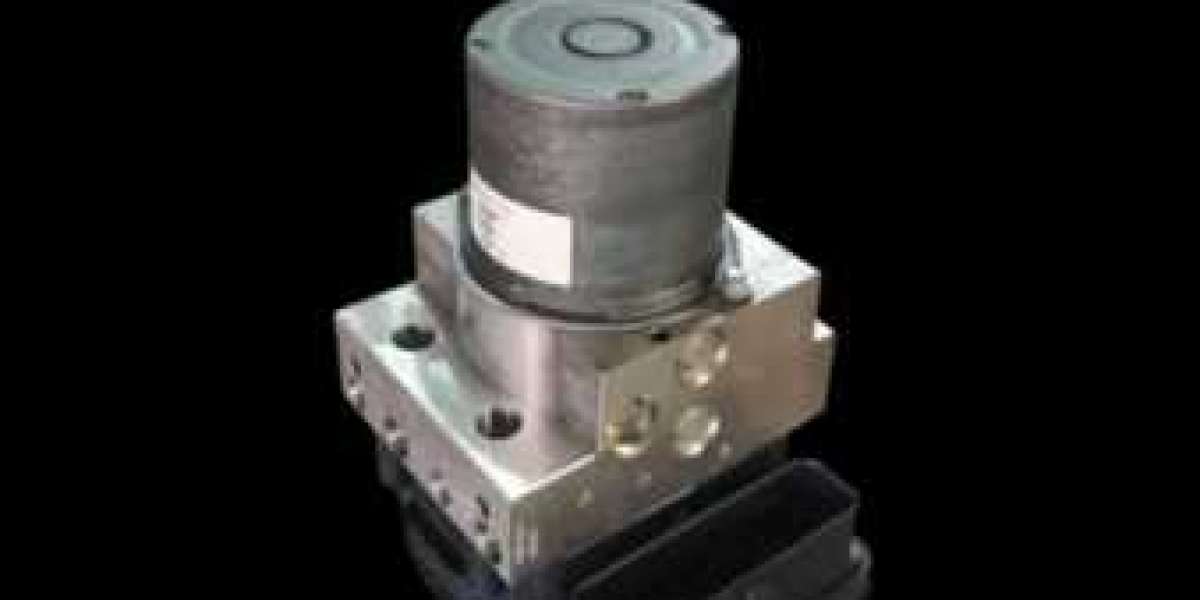Understanding the ABS Control Module: A Core Safety Component in Modern Vehicles
Braking technology has come a long way from the days of purely mechanical systems. Today’s cars rely heavily on advanced electronics to ensure safer, more controlled stopping power. At the center of this progress is the ABS control module — a compact but powerful unit that manages one of the most important safety features: the Anti-lock Braking System.
The Role of the ABS Control Module
The ABS control module is essentially the “brain” of the anti-lock braking system. While the mechanical brake components apply stopping force, the control module ensures that the brakes work in a way that prevents wheel lock-up during hard or sudden stops.
By rapidly processing wheel speed data and adjusting brake pressure in milliseconds, it allows the driver to maintain steering control even during emergency braking. Without it, ABS as we know it would not exist.
How It Works
The ABS control module’s operation involves a precise interaction between electronics, hydraulics, and sensor inputs:
- Data Collection – Wheel speed sensors at each wheel measure how fast each wheel is turning.
- Analysis – The module’s internal processor compares these speeds to detect differences that indicate slipping or potential lock-up.
- Action – If lock-up is detected, the module sends signals to the hydraulic unit to release and reapply brake pressure in rapid cycles.
- Repeat and Adapt – This process happens multiple times per second, adapting instantly to changing road conditions.
The result is shorter, more controlled stopping distances without sacrificing steering ability.
Why It’s a Critical Safety Component
The ABS control module does more than just stop wheels from locking — it plays a broader role in vehicle safety:
- Maintains Directional Control – Allows drivers to steer around hazards while braking.
- Reduces Skidding – Particularly valuable on wet, icy, or loose surfaces.
- Works with Other Systems – Supports traction control and electronic stability control.
- Improves Stopping Efficiency – Ensures maximum braking force without exceeding tire grip.
In short, it’s a silent guardian that works every time you press the brake pedal.
Main Components It Interacts With
To do its job, the ABS control module constantly communicates with:
- Wheel Speed Sensors – Provide the core data needed for decision-making.
- Hydraulic Control Unit (HCU) – Adjusts brake pressure as directed by the module.
- Vehicle Communication Network (CAN Bus) – Allows integration with other systems like stability control.
- Brake Pedal Position Sensors – Give the module insight into driver input and braking intensity.
The high-speed communication between these components ensures split-second responses.
Common Symptoms of ABS Control Module Issues
While ABS modules are designed to last, faults can occur. Drivers may notice:
- ABS Warning Light – Often the first sign something is wrong.
- Loss of ABS Function – The car reverts to standard braking without anti-lock features.
- Inconsistent Braking Response – Unexpected pulsations or premature ABS activation.
- Other Safety Systems Disabled – Traction or stability control warnings may also appear.
If any of these occur, a diagnostic scan can reveal whether the control module or another ABS component is at fault.
Why These Issues Happen
Faults in ABS control modules can arise from several causes:
- Electrical Connection Failures – Corrosion or damaged wiring can disrupt signals.
- Sensor Malfunctions – Incorrect wheel speed data can confuse the module.
- Internal Circuit Damage – Caused by vibration, moisture ingress, or overheating.
- Hydraulic Issues – Sticking valves or contaminated brake fluid can affect performance.
Keeping the braking system clean and dry is key to avoiding such problems.
Integration With Modern Safety Features
Today’s ABS control modules are far more capable than their early counterparts. They often coordinate with:
- Electronic Brakeforce Distribution (EBD) – Balances braking between front and rear wheels.
- Emergency Brake Assist – Boosts braking force in panic situations.
- Adaptive Stability Systems – Adjust braking on individual wheels to prevent skids.
- Off-Road ABS Modes – In some vehicles, tailored for gravel, mud, or snow.
This integration ensures that the braking system supports the vehicle’s full range of safety features.
Performance in Various Conditions
The ABS control module’s ability to adapt to different road surfaces is one of its strongest advantages:
- Dry Pavement – Provides maximum grip without locking.
- Wet Roads – Prevents hydroplaning-induced skids.
- Snow and Ice – Maintains directional control despite reduced traction.
- Gravel or Sand – Minimizes loss of control by modulating braking force.
This adaptability means drivers can rely on consistent braking performance regardless of conditions.
Maintenance Practices That Help
The ABS control module itself is not a regular service item, but supporting systems benefit from routine care:
- Brake Fluid Changes – Removes moisture and contaminants that can damage valves.
- Sensor Cleaning and Checks – Keeps data input accurate.
- Wire and Connector Inspections – Prevents electrical faults.
- Prompt Attention to Warning Lights – Early detection often means simpler repairs.
Preventive care reduces strain on the module and helps ensure it functions as intended.
The Technology Behind the Module
Modern ABS control modules are built with advanced microprocessors capable of handling real-time data from multiple sensors. These processors:
- Execute algorithms to predict and prevent lock-up.
- Communicate over high-speed networks with other vehicle systems.
- Adjust braking behavior based on driving mode or road conditions.
- Store diagnostic codes for quick fault identification.
Future models may use machine learning to further improve braking response.
Looking Ahead: The Future of ABS Control Modules
As vehicles move toward greater automation and connectivity, ABS control modules will evolve to:
- Work With Predictive Safety Systems – Using real-time weather and traffic data.
- Integrate With Autonomous Driving – Providing precise braking control without driver input.
- Enable Vehicle-to-Vehicle Communication – Sharing hazard data to prepare braking systems in advance.
This transformation will make them an even more critical part of vehicle safety architecture.
Conclusion
The ABS control module is a small but powerful part of a vehicle’s braking system. By preventing wheel lock, it maintains control, stability, and safety under a variety of road conditions. Its ability to work in harmony with other safety systems makes it one of the most important components in modern automotive technology. As vehicles become smarter, the ABS control module will remain central to ensuring that safety keeps pace with innovation.








